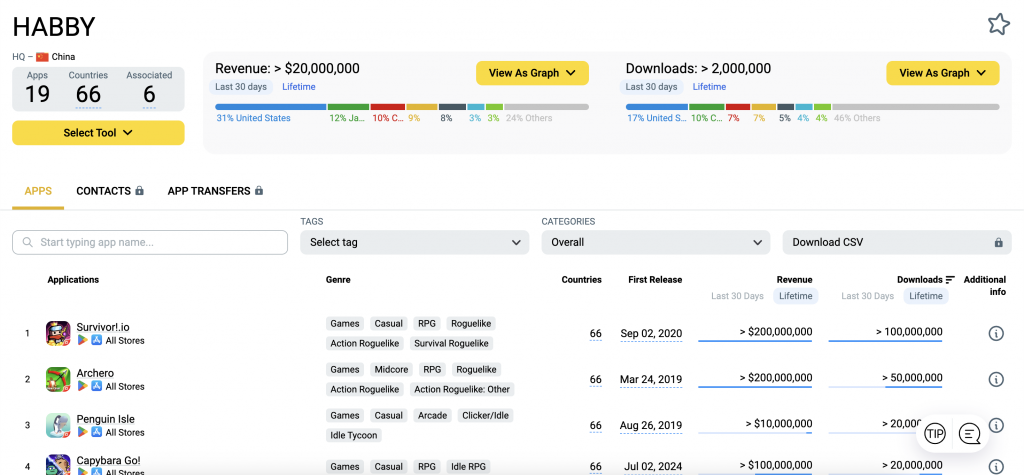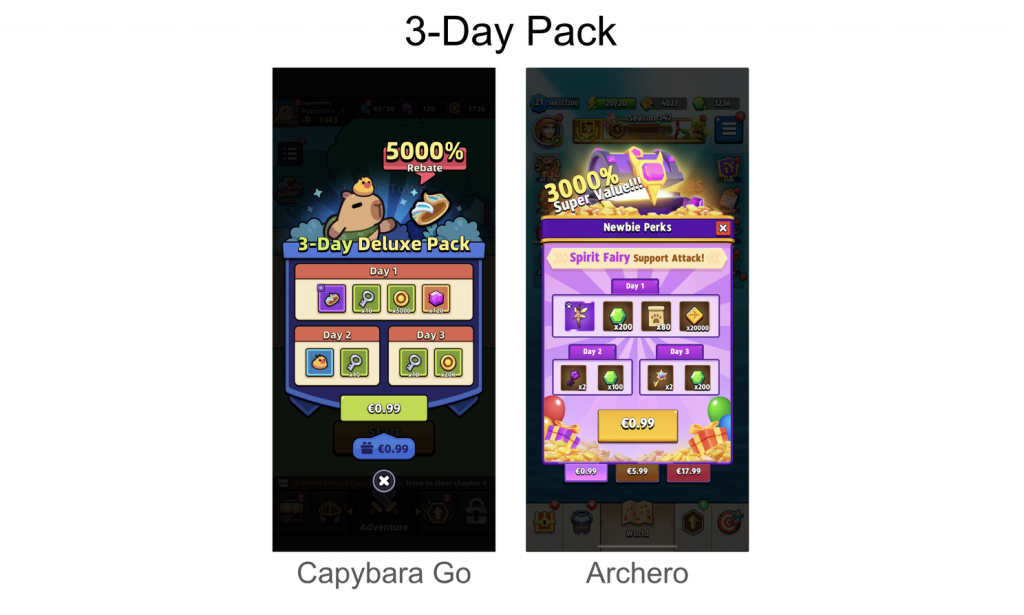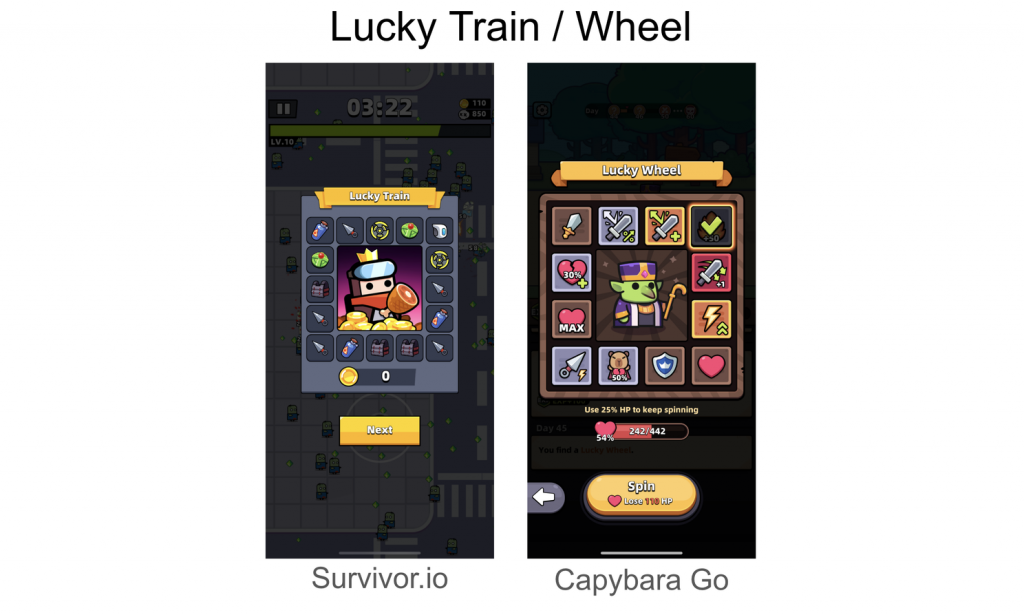We asked Michael Khripin, Product Owner at Balancy, to take a closer look at how Habby approaches meta reuse—and what it means for other studios chasing sustainable, scalable LiveOps.
Habby in AppMagic
According to AppMagic data, Habby’s mobile titles continue to punch above their weight in revenue, especially compared to download volumes. Survivor.io, for example, consistently charts among the top 10 grossing games in multiple markets, while other titles like Archero, Kinja Run, and Capybara Go! maintain strong positions in both installs and monetization.

Data about downloads and IAP revenue of titles by Habby in AppMagic (June 2025). Note that the platform doesn’t provide ad revenue data.
A Publisher Built on Meta Efficiency
Habby’s games don’t just share a visual style or casual gameplay pacing. They share something deeper: a meticulously templated meta structure.
While each title delivers a distinct core gameplay loop—roguelike shooter, arcade runner, idle pet game—the meta layer remains strikingly familiar. This is a deliberate strategy.
Habby has created a system of reusable meta-game components that deliver reliable results across new titles. From early engagement to late-stage monetization, their meta reuse unlocks:
- Faster production timelines
- Lower risk per launch
- Familiarity for returning players
- Smoother LiveOps setup and testing
Let’s break it down with a few examples:
Archero
- Skill-based leveling (select a new skill each run)
- Equipment system (gear rarity and upgrades)
- Starter 3-day monetization bundle
Kinja Run
- Core runner gameplay with RPG elements
- Gear upgrades + lottery chest system
- Familiar time-limited starter offer
Capybara Go!
- Lightweight meta via gear upgrades
- Lucky Wheel as a daily retention tool
- Same 3-day bundle strategy
Survivor.io
- Deep progression with skill trees and permanent upgrades
- Lucky Train (variant of Lucky Wheel)
- Battle Pass with seasonal pacing and layered rewards
Across these games, players encounter:
- Familiar upgrade mechanics
- Time-limited deals
- Predictable event cadence
- Consistent economic structures
The result? A network of games that feel different, but operate on the same rails.
🖼️ Take a look at the screenshots from these games, showcasing how consistent the meta elements really are:
Why It Works
- It’s fast. No need to reinvent the monetization wheel with every release.
- It’s scalable. Meta modules can be plugged into new core loops.
- It’s testable. Features already validated in one game serve as reliable templates.
- It’s player-friendly. Returning players adapt quickly to the loop and structure.
💡 A note from Michael: “Templatization is what separates a portfolio from a hit-driven gamble. Habby doesn’t just build games—they build systems that support games.”
LiveOps Implications
Templatization isn’t just about development speed. It also powers LiveOps.
By keeping meta systems consistent, Habby can:
- Sync event structures across titles
- Share backend systems and reward logic
- Simplify segmentation and A/B testing
- Cross-pollinate player insights across the portfolio
💡 A note from Michael: “Consistency across titles creates a LiveOps flywheel. Once you’ve cracked the code in one game, that logic becomes a reusable asset—scalable, flexible, and proven.”
This approach helps reduce operational overhead while amplifying long-term performance.
Final Thoughts
Habby’s success shows that templatization is not about taking shortcuts—it’s about creating systems that empower teams to move faster, test smarter, and grow sustainably.
Habby’s success shows that templatization is not about taking shortcuts—it’s about creating systems that empower teams to move faster, test smarter, and grow sustainably.
Studios exploring hybrid-casual growth can learn a lot from this model: validate once, replicate intelligently, and let LiveOps carry the momentum forward.
Balancy recently hosted a webinar with Kwalee Product Manager Misha Bezverhi titled “How to Monetize Hybrid-Casual Games Effectively in 2025”, which dives deeper into this topic of meta reuse, system modularity, and LiveOps design.
It’s a must-watch for anyone looking to make LiveOps not just efficient—but exponential.
So here’s a final reflection: what proven systems have you already built—systems that could quietly fuel your next five hits?


